How Chili Piper Grew to $50 Million ARR: Alina Vandenberghe's Playbook for Building the Company of the Future
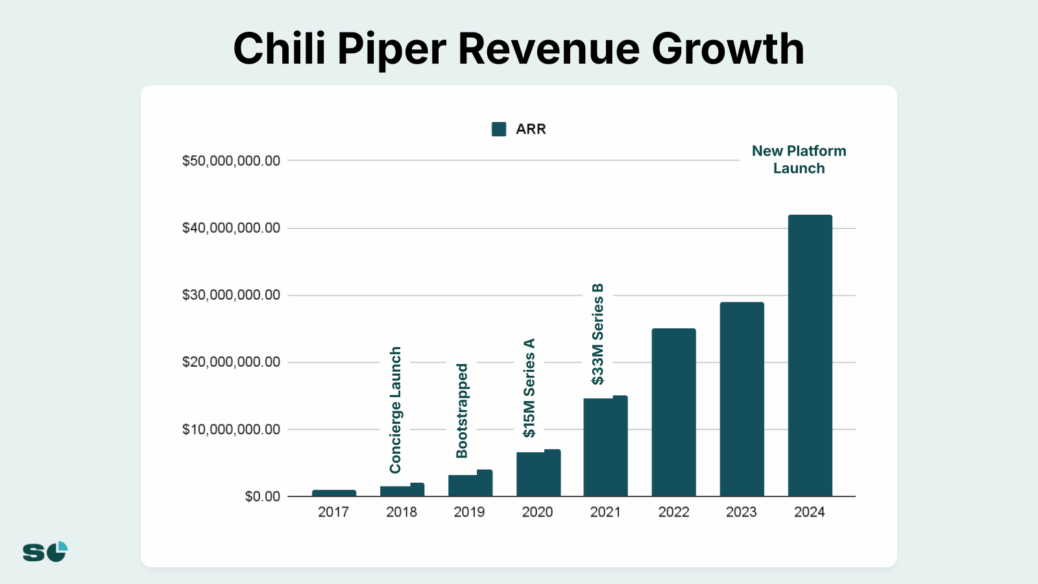
This article was written and sourced from Alina Vandenberghe’s keynote presentation at Founderpath’s last event. The images embedded below are from the 42 page slide deck. The full keynote recording is here.
Alina Vandenberghe, Co-Founder and Co-CEO of Chili Piper, transformed a simple meeting scheduling tool into a comprehensive demand conversion platform reaching $50 million in annual recurring revenue. Speaking at SaaSOpen in September 2024, Vandenberghe revealed how major companies like Monday.com, ClickUp, and Hopin all use Chili Piper to power their demo processes, while sharing her unconventional approach to building what she calls “the company of the future.”
The Playbook: 5 Key Lessons from Chili Piper’s Journey to $50M ARR
1. Flatten Your Organization for Speed: Vandenberghe eliminated traditional hierarchies, creating a self-managed structure where decision-making happens collectively, not at the top. This “founder mode” approach keeps the company agile even at scale.
2. Build Multi-Product from Your Core: Starting with one product, Chili Piper expanded to five SKUs (form routing, chat, team handoff, scheduling, lead distribution) within their demand conversion platform, enabling powerful cross-sell opportunities.
3. AI-Powered Targeting: Using 300+ data points and autonomous AI bots, Chili Piper identifies ideal customers with surgical precision, booking 500+ meetings per quarter without compromising authenticity.
4. Help First, Sell Second: By genuinely helping employees, prospects, customers, and partners succeed – even finding jobs for employees outside the company when needed – Chili Piper created an army of advocates.
5. Community Over Competition: Instead of traditional marketing tactics, Vandenberghe focused on building genuine human connections that AI can’t replicate, creating what one customer called “an entire industry” around their product.
2016-2019: From Bootstrap to $15M Series A Through Demo Excellence
Vandenberghe started Chili Piper with a clear observation: the traditional playbooks of entrepreneurship weren’t working anymore. As she explained at SaaSOpen, “We only have two modes – either we’re in terror or we’re in euphoria.” She chose to optimize for euphoria and fun, refusing to build a company through misery.
The initial product focused on solving a critical pain point in the sales process: demo scheduling. Monday.com, ClickUp, and Hopin became early adopters, using Chili Piper to streamline their demo processes. This focus on a specific, high-value use case helped the company bootstrap to significant revenue before raising their $15 million Series A.
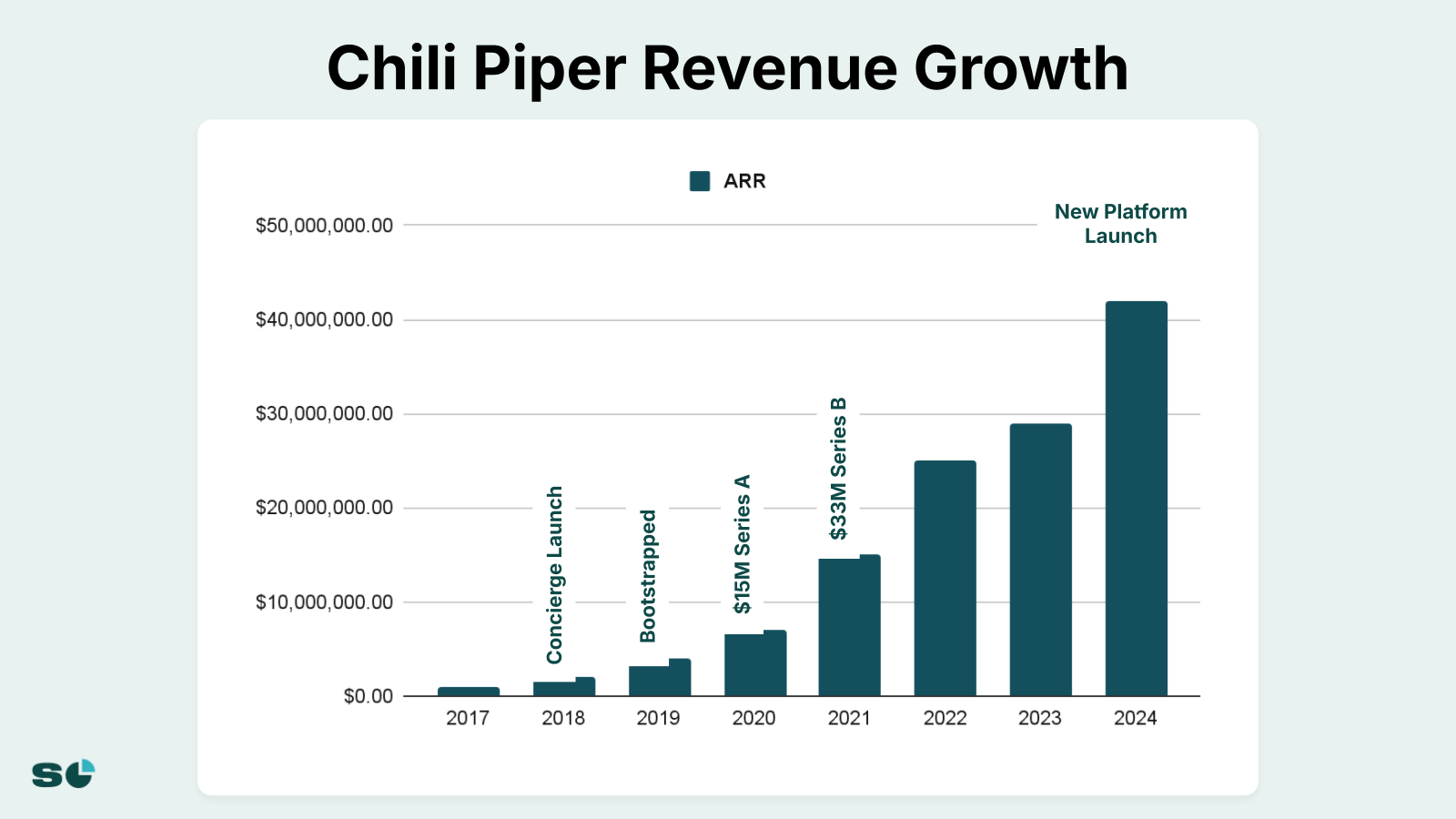
What set Chili Piper apart wasn’t just the product – it was Vandenberghe’s radical approach to company structure. She implemented what she calls a “teal organization” with five core principles:
- Self-organization instead of top-down management
- Purpose-driven work for every employee
- Distributed decision making across all levels
- Authenticity – bringing your full self to work
- Fluidity in assignment of roles based on strengths
2020-2021: How Chili Piper Hit $33M Series B by Killing Failed Products Fast
Not every product experiment succeeded. Vandenberghe candidly shared how Chili Piper built and killed an inbox product that would have allowed buyers to see their entire journey. “We realized it’s going to be so hard to get people to switch from Gmail or Microsoft to another inbox,” she admitted.
This willingness to fail fast and pivot became a cornerstone of Chili Piper’s growth strategy. Instead of forcing a difficult market transition, they doubled down on their core competency: demand conversion. The company expanded their platform to include five interconnected products, all focused on pipeline conversion.
The community approach Vandenberghe championed started paying dividends. Rather than traditional marketing funnels and gated content, Chili Piper focused on genuine help. “I don’t trick them into downloading some eBooks that nobody reads,” Vandenberghe stated. This authenticity resonated with buyers tired of traditional sales tactics.
2022-2023: 500+ Meetings Per Quarter Using AI-Powered Account Scoring
Vandenberghe took over marketing as acting CMO two years ago and immediately got obsessed with precision targeting. Using AI and 300+ data points, Chili Piper developed a sophisticated propensity model for identifying ideal customers.
High Propensity Indicators:
- More than 10 sales reps
- High influx of leads
- Complex sales cycle with AMs and CS teams
- Use of marketing automation tools (Pardot, Marketo, HubSpot)
- Sales engagement tool adoption
- Good G2 reviews
- Recent funding rounds
- Based in the US
- 100+ employees
- SaaS business model
Low Propensity Indicators:
- Traditional companies (funded before 1985)
- Microsoft Outlook users (“they take forever to close”)
- European headquarters
This data-driven approach, powered by autonomous AI bots, enabled Chili Piper to book 500+ meetings per quarter without resorting to robocalls or mass email blasts. The company partnered with specialized AI providers to create bots that gather screenshots, analyze conversion data, and semi-automate outreach while maintaining authenticity.
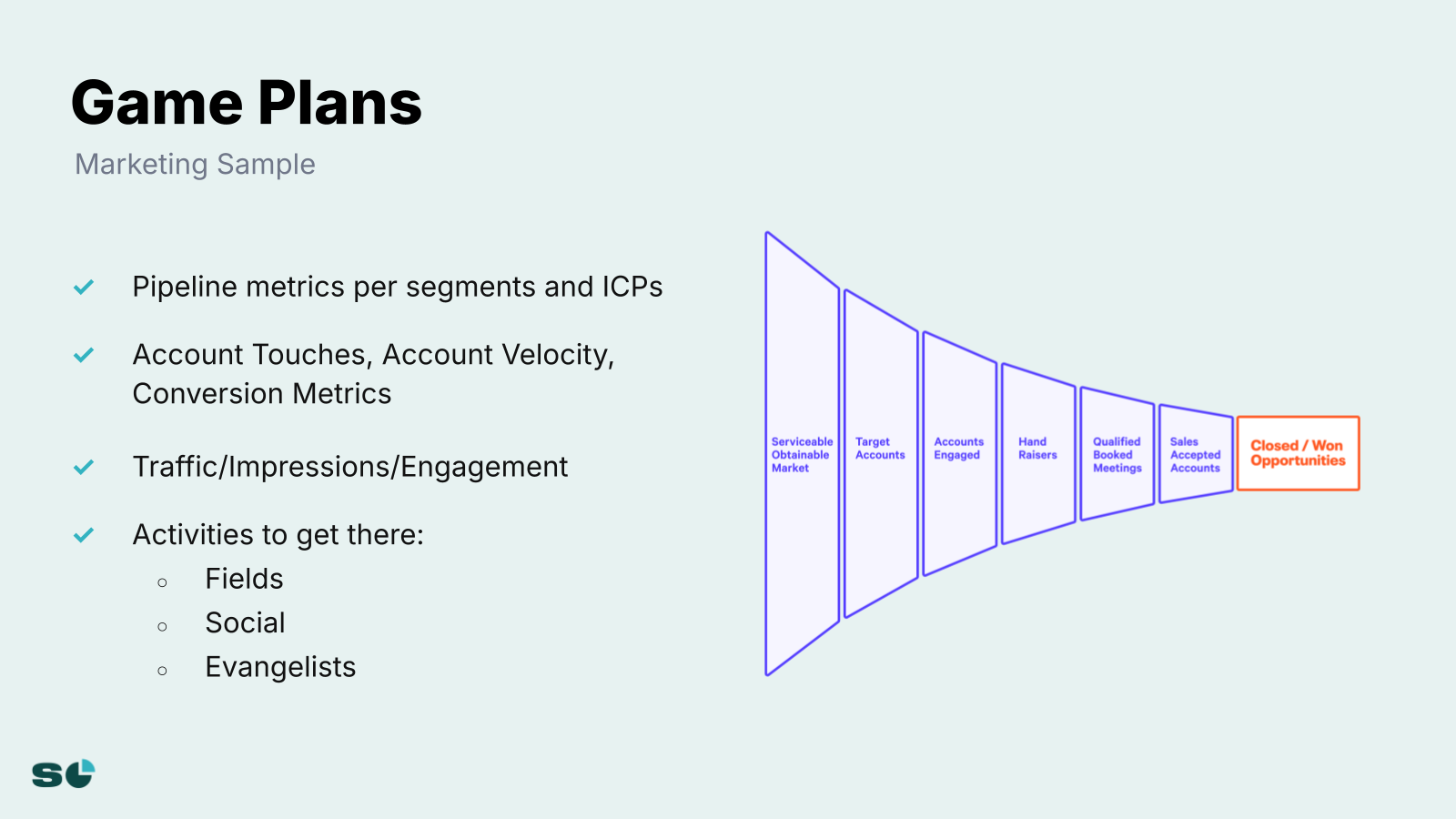
2024: Cash Flow Positive at $50M ARR Through Ecosystem Partnerships
By 2024, Chili Piper achieved what many SaaS companies struggle with: reaching $50 million ARR while maintaining cash flow positive status. The secret? What Vandenberghe calls “ecosystem selling” inspired by Bob Moore’s book on partner ecosystems.
Rather than traditional partner comarketing, Chili Piper creates unique value for each partner. Examples include the Mutiny Growth Hour event series and creative influencer campaigns that generated massive impressions in Q1 alone. As one customer noted, “You didn’t build a product, you’ve created an entire industry.”
The hiring philosophy reinforced this ecosystem approach. Vandenberghe looks for two non-negotiable traits: belief in achieving “crazy numbers” and genuine care for helping others. “I cannot teach people how to believe and I cannot teach people how to care about others, but I can hire people that have these characteristics,” she explained.
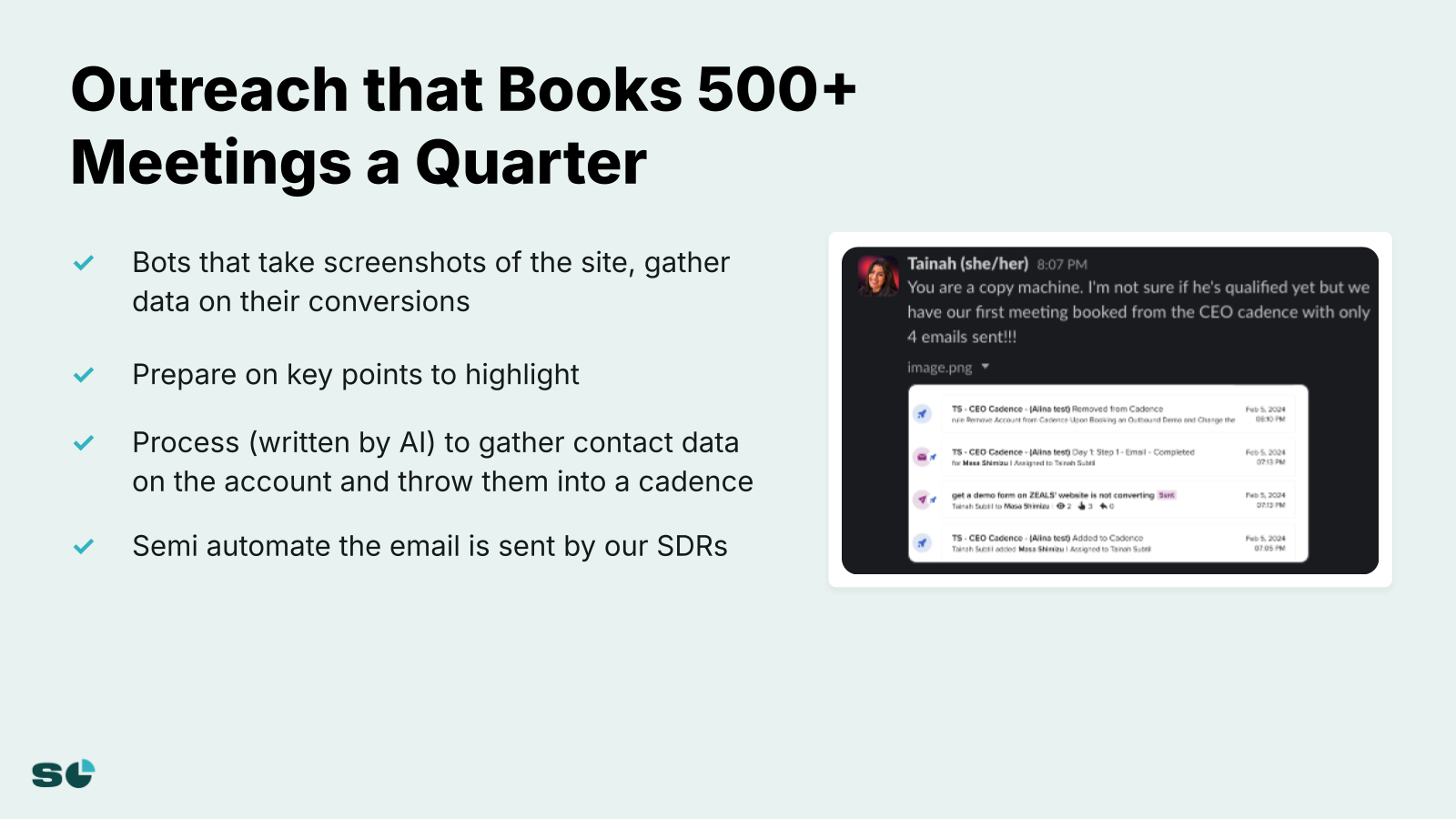
The Human Touch: Why Relationships Beat Robots Every Time
Despite heavy AI usage for operations, Vandenberghe believes human connections remain irreplaceable. “Autonomous AI bots are going to be here, they can act as salespeople, but there’s something that remains which is our humanity and our ability to connect with others. That’s so much harder to scale and so much harder to fake.”
This philosophy extends to employee management. If Vandenberghe can’t find the right growth path within Chili Piper, she actively helps employees find opportunities elsewhere. With customers, the team doesn’t stop at deployment – they help with tactics, success metrics, and even getting customers speaking opportunities at conferences.
The approach to influencer marketing follows the same principle. Beyond cash payments, Chili Piper focuses on creative ways to help influencers grow their audiences. One influencer generated significant impressions in Q1 through collaborative content initiatives.
Building the Company of the Future: Flat Structure Meets AI Efficiency
Vandenberghe’s vision for the “company of the future” challenges traditional organizational structures. Inspired by Paul Graham’s “Founder Mode” essay and Brian Chesky’s approach at Airbnb, she advocates for radical flatness where founders stay close to operations rather than hiring senior people and getting out of their way.
The game plan approach borrowed from sports ensures this flat structure doesn’t devolve into chaos. Every team has specific pipeline metrics, account velocity targets, and conversion goals. Marketing, for example, tracks:
- Pipeline metrics per segment and ICP
- Account touches and velocity
- Traffic, impressions, and engagement
- First engagement optimization
- 16-touch journey mapping (as research shows buyers need 16 touches before purchasing)
For more insights on how Chili Piper built their demand conversion platform, watch Alina Vandenberghe’s full keynote presentation where she shares additional tactics and live demonstrations.
The Bottom Line: $50M ARR Through Authentic Growth
Chili Piper’s journey to $50 million ARR proves that SaaS success doesn’t require following traditional playbooks. By combining a flat organizational structure, AI-powered operations, genuine community building, and a help-first mentality, Vandenberghe created what she calls a company worth passing to future generations.
Key takeaways for SaaS founders include the importance of believing in “crazy numbers,” the power of killing products that don’t work quickly, and the irreplaceable value of human connections in an AI-powered world. As Vandenberghe concluded, products are easy to copy, but genuine relationships and community are nearly impossible to replicate.
The company’s current trajectory – cash flow positive at $50M ARR with continued growth – positions Chili Piper as a potential unicorn in the making, all while maintaining the authentic, help-first culture that got them there.
If you’re an ambitious founder looking for capital to grow, we’d love to consider funding you at Founderpath. Click here to request capital.
Recent Articles
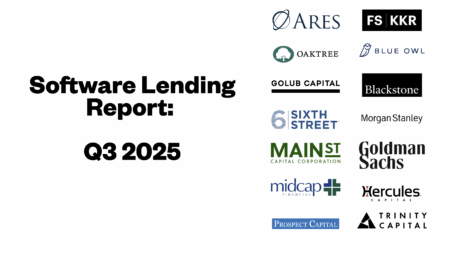
Software Debt Q3 2025 Benchmarks
As of Q3 2025, the country’s largest publicly traded direct lenders collectively hold $23.4 billion of software-related loans on their…
Top Growth Frameworks for Founders in 2025
The Ultimate Guide to Startup Growth Frameworks (With Real Founder Examples) Most founders think about growth in terms of tactics:…
Founderpath Frequently Asked Questions
What types of funding products does Founderpath offer? We currently offer two main products for B2B SaaS founders: Revenue-based financing:…